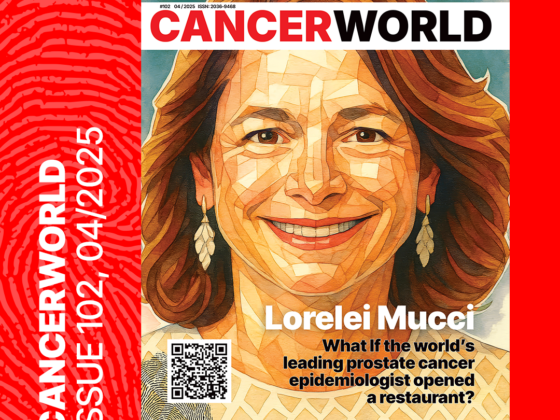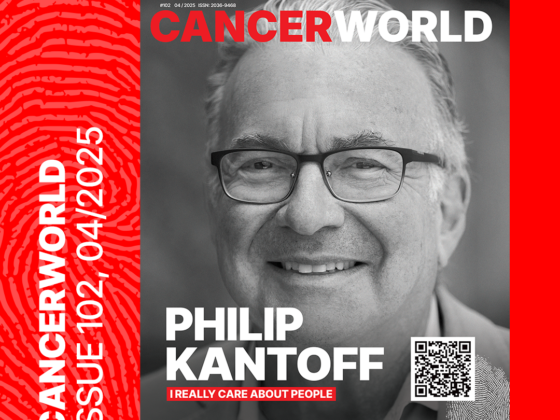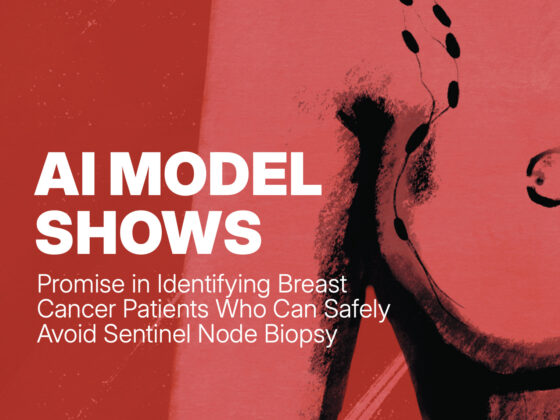It’s long been clear that, in most patients with metastatic HER-positive breast cancer, adding effective HER2 blockade to cytotoxics can result in very prolonged responses. Janet Fricker reports on the prospective trials building evidence on whether – and in whom – these responses could amount to a cure.
When Yvonne Fantaci was diagnosed with metastatic HER 2-positive breast cancer in April 2017 she felt blindsided. “To be told I had metastatic breast cancer without ever being diagnosed with a primary breast tumour was shocking,” remembers Fantaci, a 67-year-old director of a data company and mother of three adult children, from Danvers, Massachusetts. Images from her first CT scan revealed metastases at 11 different sites throughout her body, including lungs, liver, kidneys and lymph nodes.
To prolong her life, Fantaci received standard first-line treatment for metastatic HER2-positive breast cancer, consisting of a weekly infusion of paclitaxel chemotherapy combined with targeted anti-HER2 therapy in the form of two monoclonal antibodies – trastuzumab and pertuzumab – given by infusion every three weeks. “The infusions became part of my life. After a while the paclitaxel stopped, but I was told that I’d need trastuzumab and pertuzumab for the rest of my life,” she says.
But every time Fantaci attended for a CT scan, her medical team would comment on her remarkable progress. “The tumours just kept shrinking. Eventually, the CT report indicated that they’d shrunk to 3% of their original volume and they stayed at that level for many months. However, I was told that CT scans just aren’t that definitive. Scans may also show dead cancer cells.”
This exceptional response has led Fantaci into uncharted territories – a new frontier in HER2-positive metastatic breast cancer that has been made possible by extraordinary recent developments in HER2-targeted agents. As a consequence, she was given the option to join the STOP-HER2 trial, where she volunteered to cease all anti-cancer treatment, under close monitoring.
A milestone in efforts to cure advanced cancers
Twenty-five years ago, receiving a diagnosis of HER2-positive metastatic breast cancer was tantamount to a death sentence. Accounting for around 20% of all cases of breast cancer, the HER2-positive subtype was considered a particularly aggressive form of the disease. “Studies showed patients with HER2-positive breast cancer tended to suffer recurrence more often and earlier than other forms of breast cancer. Metastases also happened in areas of the body that were higher risk, such as the brain,” says Paolo Tarantino, a breast oncologist and clinical fellow at Dana-Farber Cancer Institute, Harvard Medical School, in Boston.
The advent of therapies such as trastuzumab and pertuzumab that specifically target the HER2 protein started to transform the outlook of the disease. Around 2005, John Crown, a medical oncologist at St Vincent’s Hospital, Dublin, started noticing that a small proportion of patients with metastatic HER2-positive breast cancer were achieving extraordinary results. “We had a few patients with large burdens of liver and lung metastases whose tumours were just shrivelling up,” recalls Crown. Such anecdotal observations prompted Crown, together with Giuseppe Gullo (then a colleague at St Vincent’s), to undertake a retrospective study of all patients treated for histologically proven HER2-positive metastatic breast cancer between May 2000 and March 2007, at either the St Vincent’s Hospital or the Humanitas Cancer Centre in Rozzano, Italy. Results, published in Annals of Oncology in 2012, revealed that 13 of 84 patients (15%) achieved complete response, and eight (9%) achieved durable complete response (≥5 years’ continuous remission).
“We stuck our necks out and said we believed it should no longer be considered an incurable disease, but an occasionally curable disease”
Such figures were in stark contrast to historical data showing that, with chemotherapy alone, only around 1% of patients with HER2-positive metastatic breast achieved complete response. “We stuck our necks out and said we believed that HER2-positive MBC [metastatic breast cancer] should no longer be considered an incurable disease, but an occasionally curable disease,” says Crown.
Arguably, the seismic shift in perceptions of HER2-positive metastatic breast cancer came with publication of the final results of the CLEOPATRA study, which brought the advances in treating this subtype to the attention of the wider oncology community. Published in Lancet Oncology in 2020, the data revealed that, after eight years of treatment, 16% of women receiving pertuzumab, trastuzumab, and docetaxel had undergone no progression of disease.
In 2023, even greater numbers of long-term responses in HER2-positive metastatic breast cancer were reported, with publication in The Lancet of the results of the DESTINY-Breast03 trial, which delivered the trastuzumab via the antibody drug conjugate (ADC) trastuzumab deruxtecan (T-DXd). “My perception is we’ve increased long-term responders with HER2-positive MBC from 16% in CLEOPATRA to around a quarter of patients taking T-DXd,” says Tarantino. Numbers of patients achieving exceptional results, he adds, are likely to improve further, with more than 200 ADCs currently in development. “ADCs are modular, a bit like Lego, where changing the antibody, linker, or chemotherapy can improve results,” he says. The development of ADCs with innovative payloads, or bispecific and trispecific ADCs that simultaneously bind multiple targets, he adds, are likely to lead to even greater improvements.
“All the books about metastatic HER2-positive breast cancer start by stating it’s an incurable disease. But that’s changing. We’re beginning to realise that some patients experience long-disease control that doesn’t affect their life expectancy, and in a few cases, they may even be cured,” says Joseph Gligorov, Professor of Medical Oncology at Sorbonne University, Paris.
The ability to block HER2 expression, agrees Crown, “has completely subverted the biology of HER2 positive metastatic breast cancer and transformed the worst type of metastatic breast cancer to have into the best type.”One question is why this volte-face should have occurred in metastatic HER2-positive breast cancer, rather than other subtypes? Another is why exceptional responses do not occur nearly so often in metastatic cancers that have originated from other organs? The answer, says Gligorov, can be found in the similarities between HER2-positive breast cancer and chronic myeloid leukaemia (CML) – another cancer where targeted treatments lead to durable complete pathological responses in a subset of patients (see How today’s CML patients can aspire to a drug-free life). Both are much simpler than other cancers and have one predominant driver – the mutated HER2 gene in the case of HER2-positive breast cancer and the BCR-ABL fusion gene in the case of CML. “The tricky thing about other types of breast cancer and solid tumours is that they often have more than one clone, with each containing different drivers,” explains Gligorov, “which means that once you stop treatment other clones can take hold and dominate.”
Could this mean I’m cured?
The groundbreaking responses observed in some cases of metastatic HER2-positive breast cancer are now opening the possibility for some patients to consider taking treatment holidays and even stop treatment altogether. Treatment holidays are an important option for patients, says Gligorov, because it allows them to take a break from troublesome side effects, or break free for a while from the regular visits to hospital to do things like going on holiday.
Requests from patients who have achieved a complete response to stop treatment altogether are less frequent, because of the uncertainty involved, as Fatima Cardoso, President of the Advanced Breast Cancer (ABC) Global Alliance, explains. “For patients, stopping treatment is a very personal decision about how averse they are to risk. Even though they may be in complete remission, we’ve no way of knowing whether stopping treatment will lead to their cancer returning and progression of disease. Some patients get extremely stressed if we talk about stopping, whereas others view it as a good outcome,” she says.
“Some patients get extremely stressed if we talk about stopping, whereas others view it as a good outcome”
Fantaci falls firmly into the latter group. She has embraced the idea of stopping treatment and not feeling tethered to the hospital by having to come in every three weeks for infusions. The freedom means that she has been able to start travelling again and spending more time with her children and grandchildren, without being laid low by side effects such as gastrointestinal upsets and fatigue. “Stopping has allowed me to mentally move on from my cancer,” she says.
Gligorov stresses that the personal advantages from stopping treatment may be quite limited for patients who are not troubled by safety issues or side effects, because patients do still need to regularly attend hospital for scans to monitor for signs of recurrence. “It’s not only the time involved in coming back to the hospital for scans, but also the anxiety created while they wait for results to see if their disease has returned,” says Gligorov. He recognises, however, that there may be financial benefits from coming off treatment, for instance in the US, where even patients with insurance may have co-payments.
Oncologists themselves feel varying levels of confidence when it comes to stopping or pausing treatments in exceptional responders. Cardoso says she has noticed that veteran oncologists can feel more at ease offering this as an option. “All they have to go on is their clinical sense of what’s going to happen. We find the more experienced the oncologist the more at ease they are with stopping treatment or undertaking treatment holidays. They know the disease and have developed a clinical sense of what’s going to happen.”
Building the evidence
The problem facing oncologists contemplating stopping treatment, says Cardoso, is that the field is currently a ‘data-free zone’. “I have to tell patients that I can’t be 100% certain their disease won’t return, and many aren’t comfortable with taking this risk.”
Obtaining data has been challenging, she adds, because pharmaceutical companies generally don’t follow patients long term to identify those who are exceptional responders. “While this is an interesting question for the academic community, it’s not of much interest to companies. It also costs a lot of money to keep trials open,” says Cardoso.
Real-world data provided by registries has not proved to be a solution. “We don’t even know how many metastatic breast cancer patients exist because national cancer registries don’t record relapse, they only record diagnosis and death,” says Cardoso.
Currently, a few case series are all there is to go on, such as one compiled by Izzet Dogan from Bakırköy Hospital, Istanbul. In the cohort study published in Nature Scientific Reports in 2023, Dogan reviewed outcomes of 15 patients with metastatic HER2-positive breast cancer who had stopped therapy for a variety of reasons – some due to side effects, such as heart failure, and others because they had become weary of treatment. At a median follow-up of 32 months, recurrence was detected in two of them (13.3%).
Addressing the issue, the 6th and 7th International Guidelines for the Management of Advanced Breast Cancer, published in The Breast in 2024, recommend that, “Stopping treatment in patients in long term complete remissions has not been adequately studied but should be considered on a case-by-case basis after extensive discussion with the patient.”
To gather prospective evidence to guide patients and explore whether the strategy to stop treatment can be applied to exceptional responders more widely, Heather Parsons, an oncologist at Dana-Farber Cancer Institute, initiated the STOP-HER2 study, which started in April 2023. Inclusion was based on the US National Cancer Institute definition of ‘exceptional responder’ as someone who has survived without progression on first-line therapy for at least three years (representing three times the median duration).
The investigators rejected the classic randomisation approach, instead giving patients who met the inclusion criteria a choice about whether they want to stop treatment, and then allocating them accordingly. “We didn’t feel it was acceptable to randomise patients. Patients and providers have strong feelings about whether they’re willing to stop treatment,” says Parsons.
Fantaci had no reservations in opting for the stopping arm. “I wanted something positive to come out of my misfortune that would benefit future generations,” she explains.
“The real fear is about outcomes if the disease suddenly explodes. We need to know that it can be quickly controlled by restarting treatment”
One key question addressed in the phase 2 study is about what happens if patients suffer a recurrence? “The real fear is about outcomes if the disease suddenly explodes. We need to know that it can be quickly controlled by restarting treatment and that patients can regain their previous response,” says Parsons. This fundamental question, she adds, was asked in the CML stopping trials, where the finding that patients can generally regain their previous deep molecular response has been critical to the widespread acceptance of this approach.
Another aspect of STOP-HER2 is the collection of blood that will be used to measure circulating tumour DNA (ctDNA) and assess whether its presence is associated with the risk of future progression. New generation, ultrasensitive ctDNA assays – which are designed specifically for each patient and track known mutations in an individual’s cancer – can now detect very small amounts of ctDNA in blood, and offer the opportunity to identify progression earlier than relying on imaging or symptoms.While the objective is not to guide trial decisions around restarting treatment (this is being done by CT scans performed every 12 weeks), the investigators hope to collect evidence needed to determine how best to monitor patients in the future. The blood test, they hope, will help put monitoring of breast cancer patients, who until now relied on RECIST 1.1 criteria (using CT or MRI imaging) on a level with CML, which uses reverse transcriptase-polymerase chain reaction technology to measure blood levels of BRC-ABL. “Ultimately, the presence of ctDNA and its dynamics may be able to give us guidance about first whether it’s time to stop treatment and then, after stopping treatment, whether the cancer has returned and patients would benefit from restarting,” explains Parsons. The phase 2 STOP-HER2 study, which is being run in nine sites across the US, aims to recruit 52 patients in the stopping arm and 30 in the continuation arm.
Predicting which patients may be curable
Crown emphasises that, while some patients with metastatic HER2-positive breast cancer can be cured, they remain the exception. “The overwhelming majority of patients with HER2-positive MBC still die from their disease,” says Crown. “So going forward we need to work out how to identify patients who won’t achieve long survival with current treatments, and find alternative approaches.”
To uncover differences, Naomi Walsh, from Dublin City University, has performed whole genome sequencing on 12 exceptional responders and 11 non-responders, taken from Crown’s database at St Vincent’s Hospital. Exceptional responders, she discovered, have more repetitive sequences of DNA in their centromeres (the chromosomal structure holding the two chromatids together). “We hope to drill down on the exact regions with centromere amplification. If we can understand the biology of exceptional response and short-term/ conventional response, it might enable us to design new agents,” says Walsh. If cancer cell lines with different types of centromeres can be identified, it should be possible to design more personalised treatments for patients.
“If we can understand the biology of exceptional response and short-term/ conventional response, it might enable us to design new agents”
Taking a different approach, Stefania Morganti – medical oncologist and research fellow at Dana-Farber – has studied the molecular fingerprint of metastatic HER2-positive tumours by analysing sequencing data generated from OncoPanel testing (a targeted next-generation sequencing assay). Tumours of conventional responders, she discovered, are more likely than exceptional responders to have PIK3CA and MYC gene alterations. “Such information may allow us to explore whether agents targeting these adverse genes might increase numbers of patients with exceptional responses,” says Morganti.
In an effort to help patients in the immediate term, Parsons and her team (including Morganti) have initiated the SAPPHO trial, to explore whether currently available medications can be used in a different way in newly diagnosed patients to increase the numbers achieving an exceptional response. The trial, which opened in August 2024, is testing a regimen of medicines taken back-to-back, each of a specific duration, with no delays in between. The approach, explains Parsons, contrasts with conventional regimens, where the second treatment is not initiated until the patient’s cancer starts to grow again.
In this single-arm phase II study, treatment begins with standard chemotherapy plus trastuzumab and pertuzumab for 12 weeks. This is immediately followed by the antibody-drug conjugate T-Dxd for 18 weeks; and then tucatinib (a small-molecule inhibitor that crosses the blood–brain barrier), paired with a second antibody-drug conjugate, trastuzumab emtansine (T-DM1), for 12 weeks. Then for one year, patients receive maintenance therapy with trastuzumab and pertuzumab in combination with tucatinib, before stopping treatment altogether. “These medicines hit the same target, but not in the same way, which we think can address heterogeneity and stop the possibility of the cancer escaping control,” says Parsons.
The primary endpoint is to see how many patients remain progression-free four years after the start of the study. As a comparator, the investigators plan to use data from the CLEOPATRA trial (16% progression free survival at eight years). “Taking into consideration the additional therapies used in SAPPHO, for the trial to be positive we would need 24% of patients to be progression free,” explains Parsons.
The keenly anticipated results from STOP-HER2 and SAPPHO will demonstrate whether there will be a new treatment paradigm in metastatic HER2-positive breast cancer, where some patients will move from palliative to curative therapy and ultimately stop treatment.
Going forward, the big question is whether this treatment landscape can be replicated in other subtypes of breast cancer and/or in metastatic tumours originating from other organs? If so, this would change the whole rule book, requiring a fundamental revision in our perception of metastatic cancer, from it being a terminal illness with a limited life expectancy to a chronic condition with the potential for a cure. This raises the prospect that one day a much wider group of patients with metastatic cancers may be able to completely stop treatment and have the shadow of cancer lifted from their lives.
Milestones along the road
The road that is leading towards the possibility of a cure or very prolonged treatment-free remission in some patients with metastatic HER2-positive breast cancer began with the development of trastuzumab, the first monoclonal antibody to be approved for treating a solid cancer. Before trastuzumab, patients could expect to live on average two to three years following such a diagnosis.

The human epidermal growth factor receptor 2 (HER2) gene was identified in rat cells by Robert Weinberg from MIT (Cambridge, Massachusetts), who published the finding in Nature in 1984.
Dennis Slamon, from UCLA in Los Angeles, established the link to breast cancer in a paper in Science in 1987. Slamon showed that the HER2 protein was amplified in circa 30% of breast cancers and that amplification correlated with poor prognosis. Slamon proposed that antibodies might be developed to block HER2 proteins. His heroic struggles to develop the antibody trastuzumab (Herceptin) are depicted in the 2008 film Living Proof.
In a study published in the New England Journal of Medicine in 2001, Slamon showed that adding trastuzumab to chemotherapy led to longer overall survival (OS) – (median OS 25.1 vs 20.3 months; P=0.01). Herceptin, produced in collaboration with Genentech, was approved in combination with paclitaxel in the USA in 1998 and Europe in 2000.
In 2012, approval of pertuzumab, a second monoclonal antibody directed at HER2, with a different but complementary action to trastuzumab, improved outcomes further. Results of the CLEOPATRA study, published in the New England Journal of Medicine in 2012, showed that median progression free survival (PFS) was 18.5 months in patients treated with pertuzumab, trastuzumab, and docetaxel versus 12.4 months in patients treated with placebo, trastuzumab, and docetaxel.
Results at eight years, published in the Journal of Clinical Oncology in 2019, were seen as dramatic. They showed that 37% of patients in the experimental arm were still alive compared with 23% in the control arm (median OS 57.1 v 40.8 months). Even more remarkable was the finding that 16% of patients on the experimental arm had no progression and were classed as ‘exceptional responders’. In some cases, the tumours completely disappeared, prompting serious discussion around the possibility of extremely prolonged responses or even cure.
Development of antibody-drug conjugates (ADCs), which combine monoclonal antibodies with cytotoxic payloads, has led to even greater numbers achieving exceptional responses. The initial ADC trastuzumab emtansine (T-DM1) was supplanted by the second-generation ADC trastuzumab deruxtecan (T-DXd), with advances including attachment of more chemotherapy molecules and more easily cleavable linker technology.
Updated results of the DESTINY-Breast03 trial, published in Nature Medicine in 2024, showed median PFS was increased fourfold with T-DXd compared to T-DM1, from 7.2 to 29 months. Median OS increased from 42.7 to 52.6 months.
“The remarkable overall survival benefits seen with many of the anti-HER2 agents developed in the last decades have led to more than doubling of the median survival of patients living with this subtype of metastatic breast cancer and helped change the mentality regarding a possible cure in the near future, at least for some exceptional responders,” says Fatima Cardoso, President of the Advanced Breast Cancer (ABC) Global Alliance.











